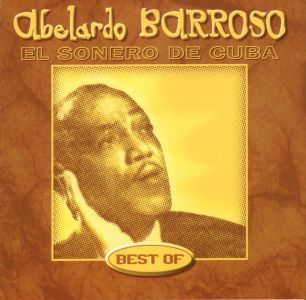9.7 Relevant performers of Cuban music in the 20th century (1900-1930).

Cuban music has always featured great performers in the diverse genres it encompasses. This period of 20th-century Cuban music (1900-1930) was very conducive to a significant increase in their emergence. Some have excelled in their artistic work and are now legends of Cuban music; among them are Sindo Garay, Francisco Fernández Dominicis, Paulina Álvarez, and Abelardo Barroso.
Antonio Gumersindo Garay y García, more popularly known as Sindo Garay, was one of the most prominent troubadours of Cuban music and a symbol of national culture. Dubbed by poet Federico García Lorca as The Great Pharaoh of Cuba.
His works were primarily inspired by his homeland, the Cuban landscape, women, and love; he is the author of more than 600 musical works. His musical talent was empirical; he never studied at a conservatory or music academy. He displayed his natural talent alongside his guitar. He founded the group of trova greats, along with Villalón, Ruiz, and Corona.
During his long life, the outstanding Cuban troubadour met various important personalities.
Given his immense musical output and his lyrics, which reveal great poetic beauty, Sindo Garay established one of the myths of traditional troubadour music, which stirred the admiration of important musicians for the quality and variety of his compositions.
Francisco Fernández Dominicis, a prominent Cuban tenor, performed the epilogue and romance of Arrigo Boito’s opera Mephistopheles in his debut performance, making a positive impact on contemporary critics. In 1911, he personally met the great Spanish baritone Emilio Sagi-Barba, who, through the conciliation of Maestro Bovi, made his debut at the “Tacón” theater with his opera and zarzuela company. On February 1, 1941, he published an article in the magazine Cubamena entitled “Puccini and his opera Turandot,” on the occasion of the Cuban premiere of the work on record. In July 1942, he organized the Cuban premiere of Puccini’s opera La Rondine at the Teatro Principal de la Comedia.
In 1946, the Havana Society held a tribute to him in the halls of the Casa Cultural (Cultural House) for his forty years of artistic career. On April 8, 1955, tenor Francisco Fernández Dominicis was awarded the “Carlos Manuel de Céspedes” Order. In 1967, he was honored for his sixty years of work and his contribution to the development of Cuban culture.
Paulina Álvarez brought rumbas, boleros, and guarachas to life in the 1920s, featuring the unique voice of this Cienfuegos native. However, it was the Danzonete that glorified her for posterity. Her solid musical training and great interpretive versatility enabled her to explore diverse genres and rhythms of Cuban music. The haughtiness and elegance she brought to each performance earned her the sympathy and preference of the public and earned her the nickname “Empress of the Danzonete.”
Fernando Collazo Hernández, a prominent Cuban singer, alternated his group with the sextets led by Ignacio Piñeiro, El Habanero and El Nacional, performing in theaters and dance halls not only in the Cuban capital but also in other cities across the country.
When Aniceto Díaz’s first danzonete, Rompiendo la rutina, premiered in 1929 in Matanzas, Fernando Collazo, along with the Gris Orchestra, was the first to sing it in the capital. The artist established himself as a singer with his interpretation of this new musical genre. He became a figure in Cuban culture. He was part of the distinguished group of Cuban musicians who succeeded in establishing Cuban rhythms in the Old Continent.
Abelardo Barroso Dargeles was a prominent Cuban singer, popularly known as the eldest sonero. At 25 years of age, he joined the Sexteto Habanero collective as a singer of song and son. This group performed at the exclusive Vedado Lawn Tennis Club. In 1928, he was requested to participate in the recordings of the Sexteto Nacional and the Habanero. In October, he recorded sixteen sones with the Sexteto Boloña, where he sang lead vocals. Among them were Échale candela, by Boloña, and Flora, by Barroso.
Together with Orestes López, he founded the López-Barroso charanga in 1933, and alternated performances with his septet Universo until 1935, when he founded the Pinín sones sextet.
In the 1940s, Abelardo Barroso performed in several shows at the Sans-Souci cabaret, providing backing vocals. In the late 1950s, Barroso appeared on radio and television programs and was also requested to perform at carnivals in several Cuban cities and to promote high-demand commercial products.
He popularized numerous songs, including: A Witch in Guanabacoa and Let’s Play, The Little Orphan; The Peasant of Cunagua; Shipwreck; The Kleptomaniac; Longina; Bruca maniguá and his own opening speech, The Panquelero. Abelardo Barroso was nicknamed Caruso by the public due to the power of his voice.








